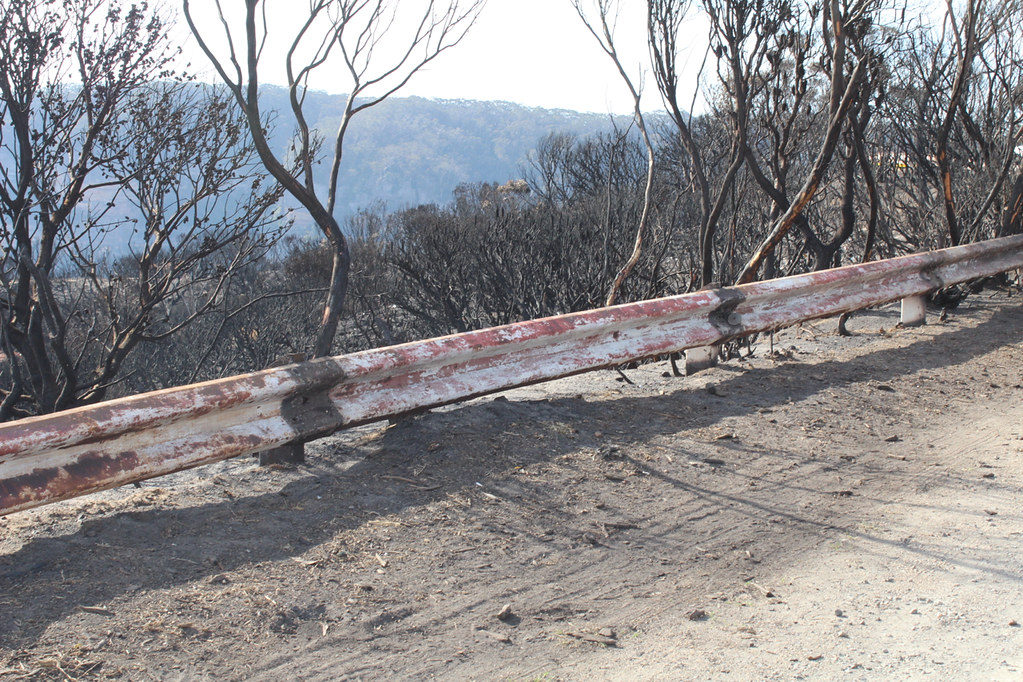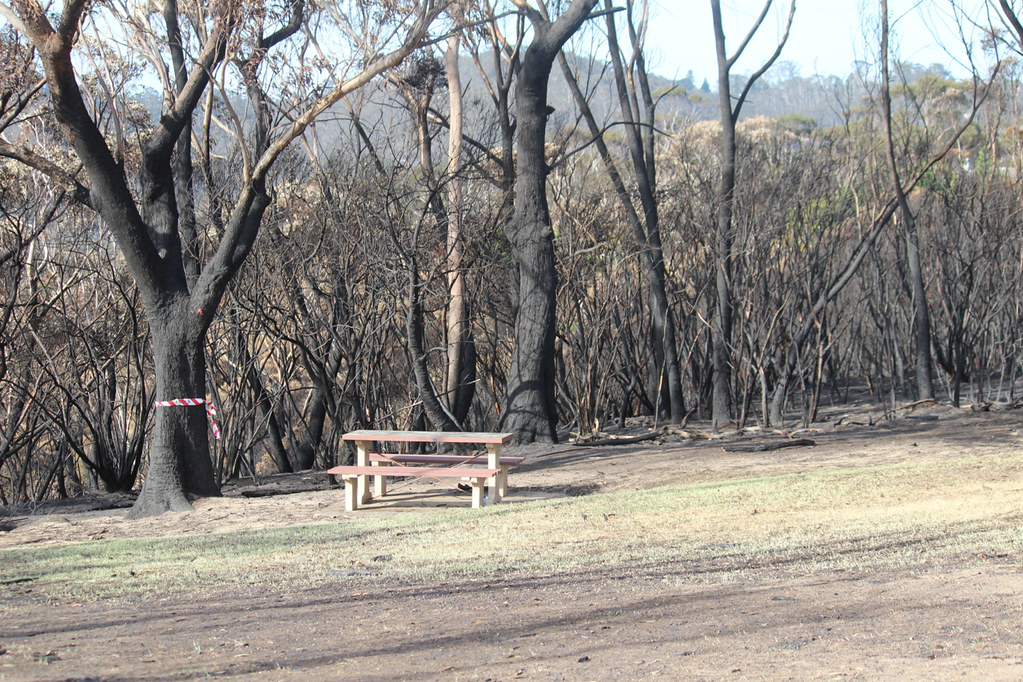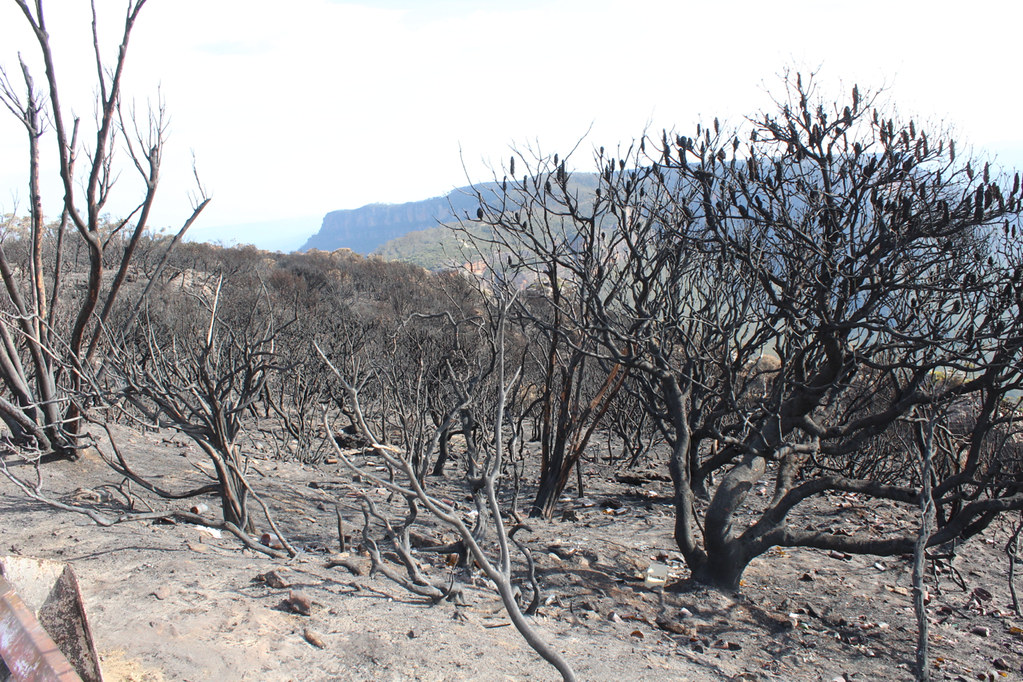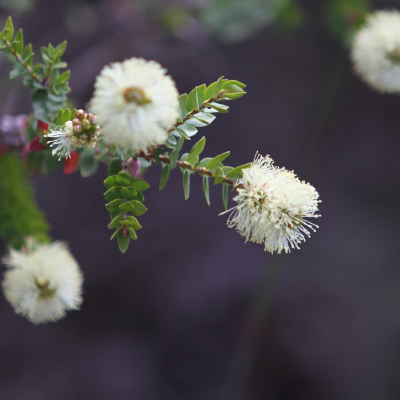To Fire or Not to Fire: My First Bushfire
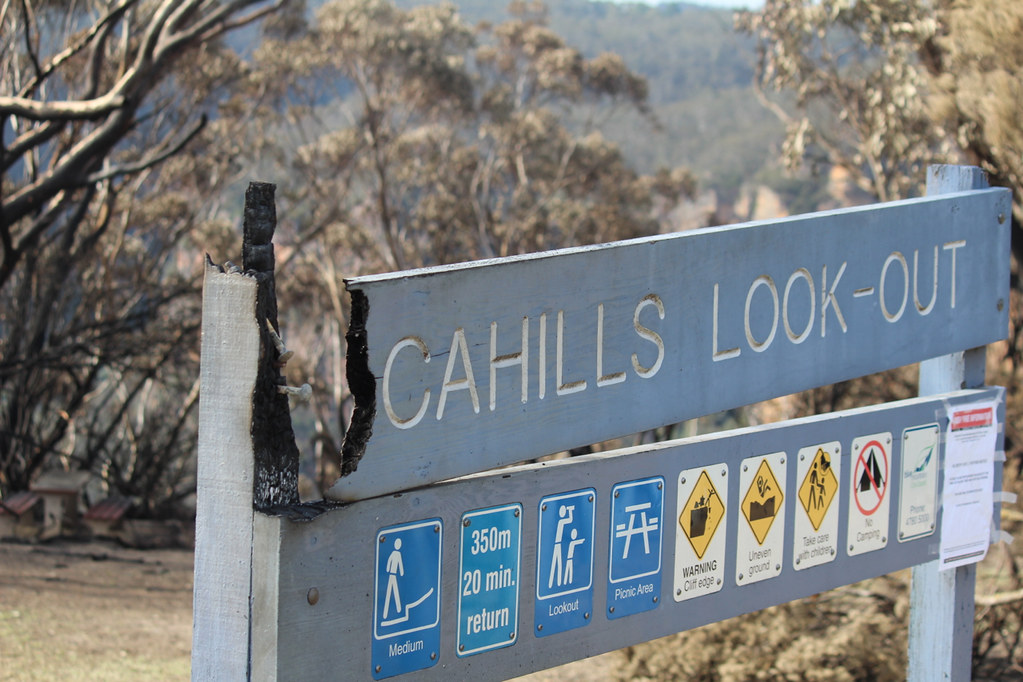
A not-so-fantastic introduction to the reality of being a volunteer firefighter in the Blue Mountains
My First Fire - 01 November 2014
They say you never forget your first bushfire, and that’s true. But just because you remember it doesn’t mean the details stay sharp. It’s been over 10 years since my first, so I figured it was time to write down what I still remember and preserve a few of those memories for future Nick to look back on.
This is more of a personal recount than a polished story, and I’m no storyteller, but here it goes! Also, I had to "borrow" a lot of photos from around the web, as I had no photographic record of my own. I'll put credits at the end.
Fire Babysitting
A fire had been burning in Katoomba, which started near Cahill’s Lookout on Cliff Drive. The word going around at the time was that an old tyre had caught fire, then rolled off the edge and into the valley below, spreading flames into remote, hard-to-reach bushland.
This wasn’t some sudden out-of-control emergency we were rushing out the door for. The fire had already been burning for a while and was, by then, being controlled. Helicopters had been dropping water on the base of the cliff line for hours, slowing its spread until the weather improved enough for RAFT (Remote Area Firefighting Team) to get in on foot and start the proper work of putting it out.
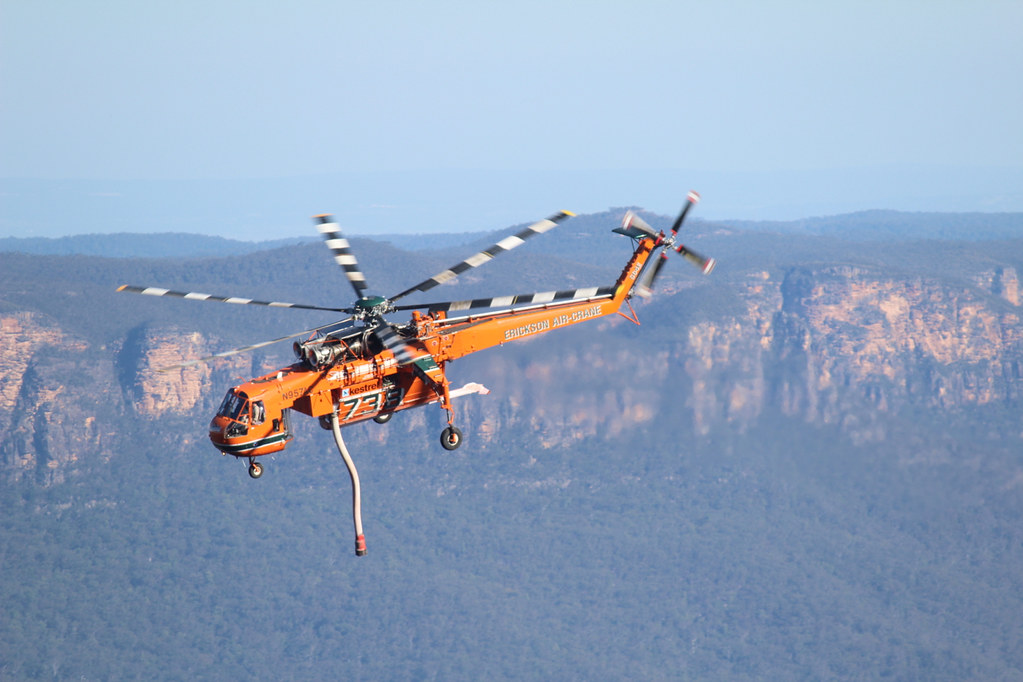
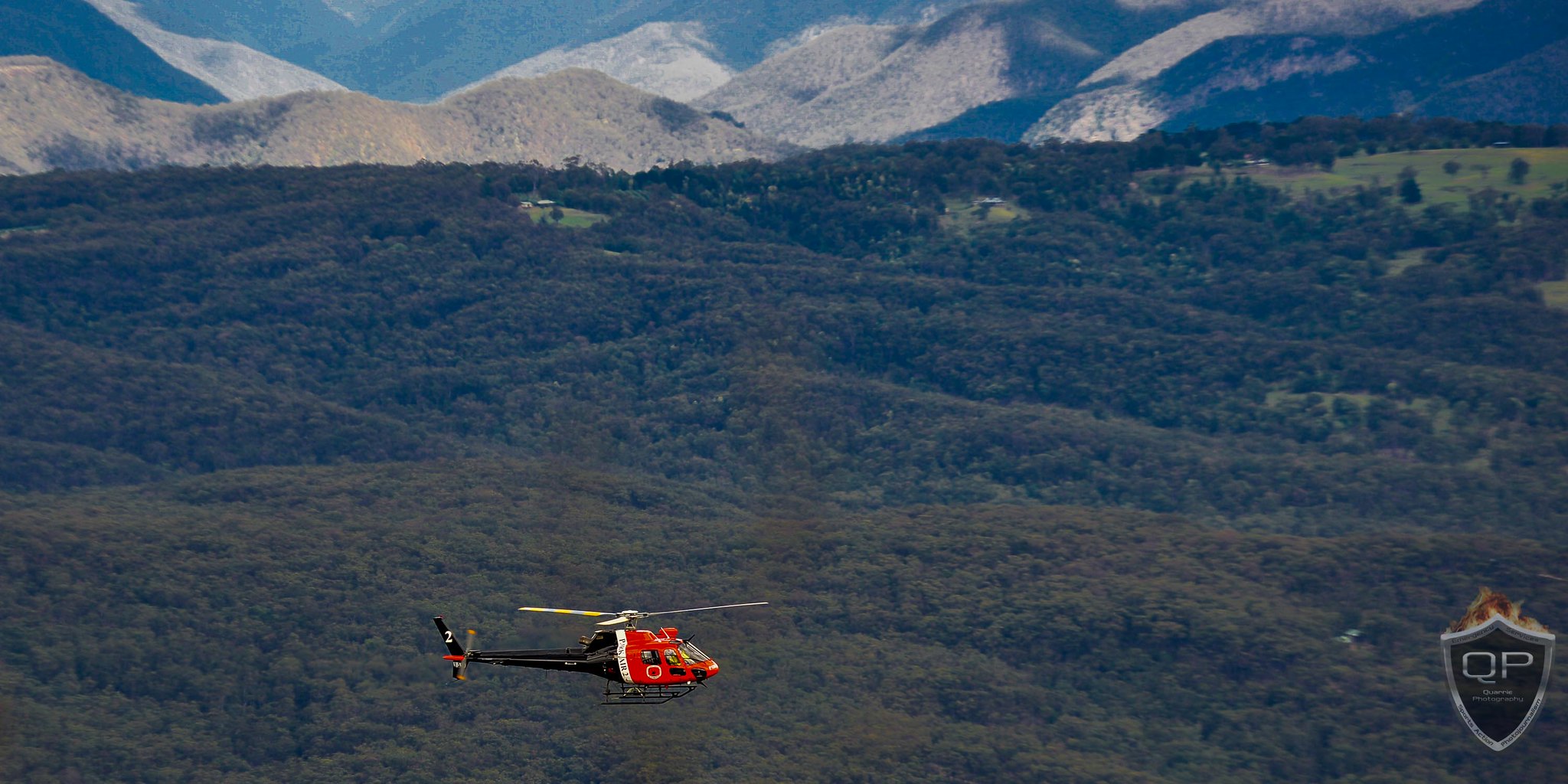
So when I was first asked to be on the crew, we were told our job was essentially to “babysit” this slow-moving fire, maybe poke at it with some hoses, then get bored on night shift.
A Green Crew
We were a green crew, three of us fresh out of the BF (Bush Firefighter) course and attending our first real fire. With me were John, a gun-obsessed American, and Brent, a local politician type who was friendly enough but seemed to treat every moment like a photo op.
To balance out the inexperience, we had two seasoned crew leaders with us. Both named Luke. Yep, two Lukes, both with surnames starting with H. It was confusiong. Thankfully, they both had nicknames, which made it a bit easier. One Luke was driving, the other was our crew leader.
None of us knew what to expect. We’d only ever trained on HRs (hazard reductions), and I think we were all quietly hoping this would be a nice, quiet shift, something to ease us in. And honestly, given our lack of experience, this was the right kind of fire for a green crew to start out on.
Heatwave Conditions
It had been a hot, dry day, a bit windy too, but by the time we were heading out, the weather was shifting. Storms were starting to build. Funny how some things stick in your memory: I remember checking the rain radar on my phone and seeing isolated storm cells all over the place. On our way up to Katoomba, we drove through several heavy downpours, water rushing through gutters, everything wet and gloomy. It looked and felt like the kind of day where no fire could survive. I honestly didn’t expect there to be much left to do by the time we arrived.
Note to self: dig up the historical radar and add a screenshot here!
But as it turned out, those storms had skipped right over the fireground. While everywhere else got drenched, our little corner of Katoomba stayed dry, and worse, it kicked the wind. Gusts up to 90 km/h were recorded as the storms brushed past.
Almost There
The drive up had sort of killed the excitement for us. Everything was wet, the skies were dark, and it just didn’t feel like “fire weather” anymore. I don’t remember exactly what I was thinking, probably wondering whether this was going to be a complete time suck. But as we got closer to Katoomba, the rain began to ease off.
We turned off the highway and headed past the Katoomba Fire Control Centre. Almost there now. As we drove down Valley Road towards Cliff Drive, the quiet was replaced by urgent calls over the radio.
The fire was crowning. Flame heights over 40 metres. The IC (Incident Controller) was calling for help.
Luke and Luke looked at each other, then back at us in the back seat. “We’re responding,” they said, lights on, sirens on. Normally, you’d radio in and wait for confirmation, but this time there was no waiting. The urgency was clear. We self-responded.
Not long after that, Fire Control contacted us to respond, but we told them we already were under lights and sirens.
We raced up Cliff Drive, weaving between confused residents standing in the middle of the road. Some were oblivious, others were pointing and watching the smoke, not realising they were blocking the road. Luke hit the siren and the horn, trying to clear a path.
Looking Straight at the Fire
As we turned around the bend and came up the hill, we were suddenly face-to-face with it. The fire wasn’t coming, it was already here. And it wasn’t just a shallow wall of flames like I’d imagined from training. This was a deep fire. Everything as far back as we could see was burning. Through the flames, it just kept going. The bush, the trees, the undergrowth, all alight.
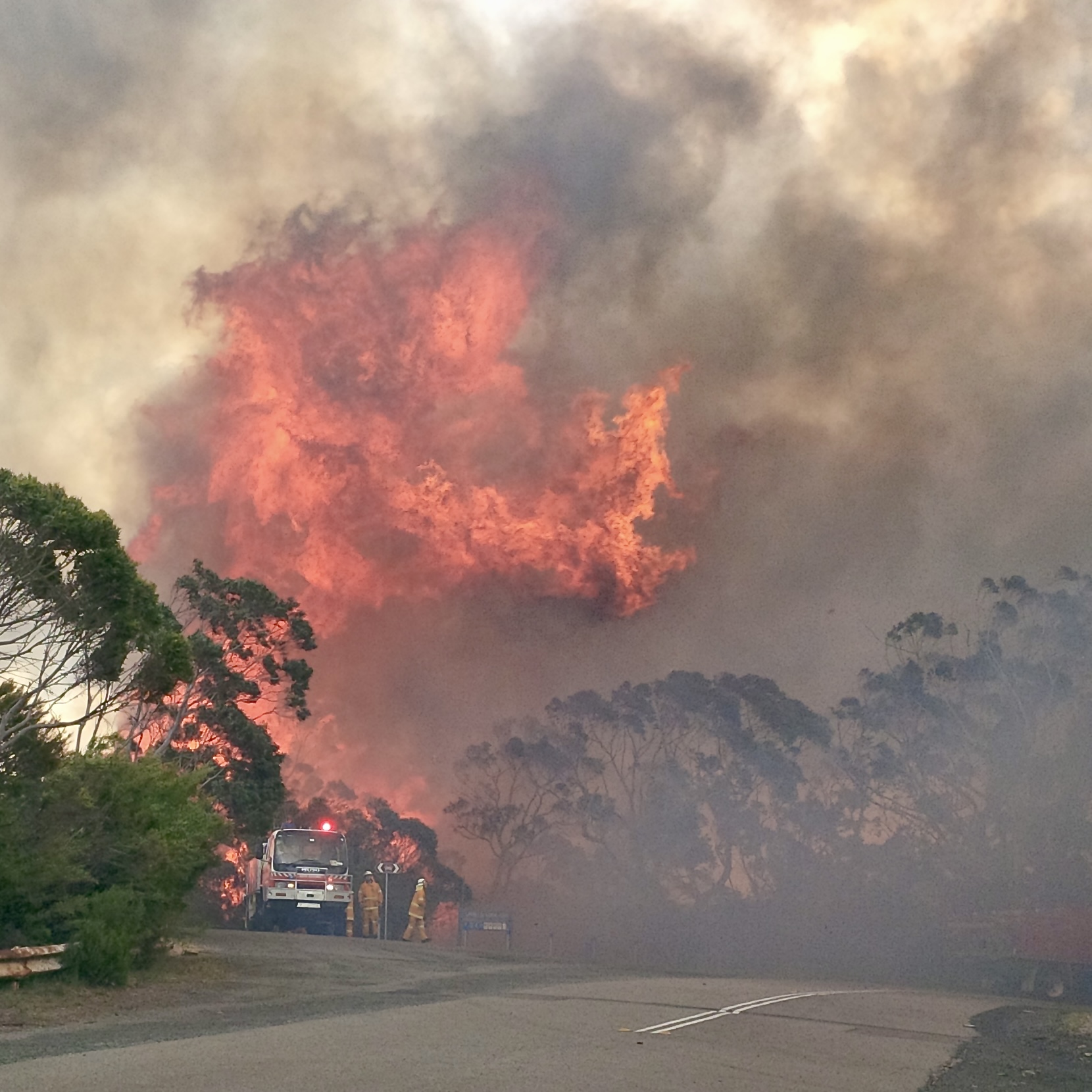
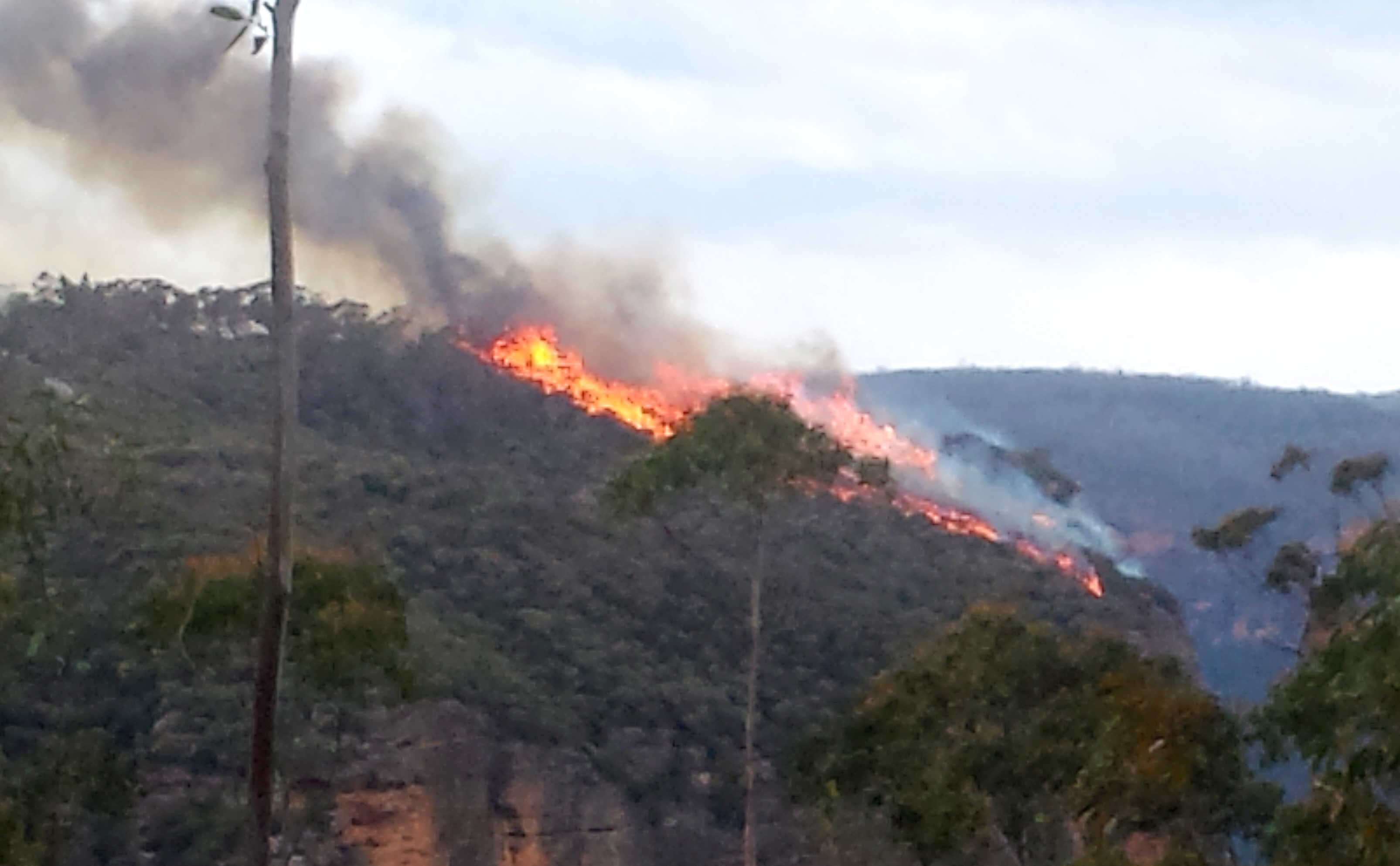
Bottom: The fire racing up the hill as viewed from another angle, looking back towards the escarpment. Our fire truck is over where the fire is heading..
It was nothing like the fires we’d seen at hazard reductions. What struck me most was how not scared I felt. I think being inside the truck gave me a false sense of security, but strangely, not feeling scared has followed me at every fire I’ve attended since. Big or small, I’ve always felt the same: adrenaline high, focused, but never in a panic or fear. I know there are very real dangers in firefighting, and I could go on about the inherent risks, but maybe that deserves its own blog post someday.
Setting Up for Property Protection
We pulled up next to the IC (Incident Commander), the fire raging maybe 20 metres away, and were told to pick a house. Once we moved onto Brogham Street, we chose house #4.
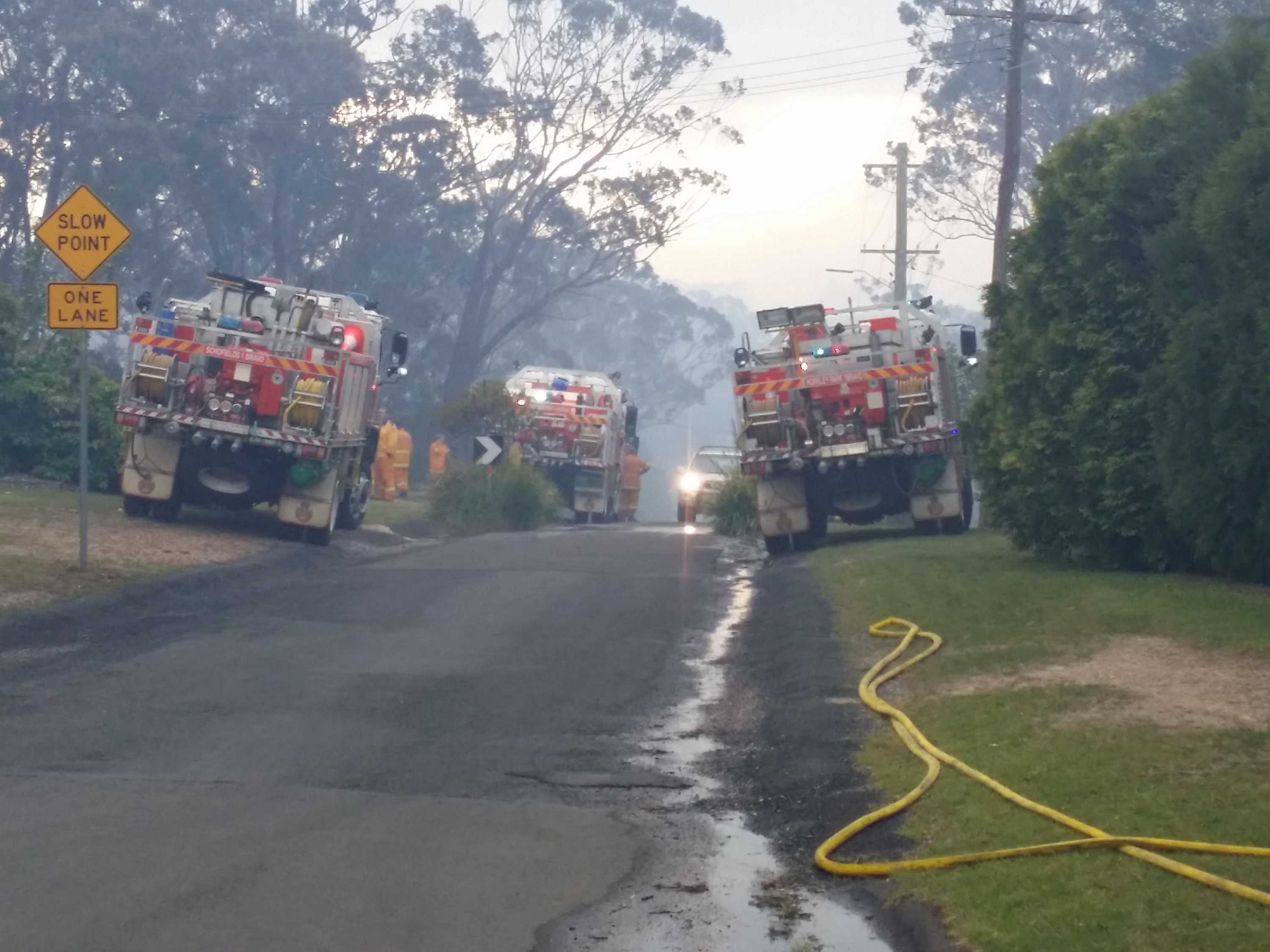
Luke jumped out of the truck and quickly told the homeowner it was time to go. They turned on their sprinklers, jumped in the car, and left. I later learned that evacuating people mid-impact isn’t usually recommended, but in this case, it worked out. It gave us a clear driveway and meant we could focus solely on the house, not the occupants.
The truck reversed in, and then it was go time.
We grabbed two lengths of hose and started "bowling" them up the side passage. No matter how many times you practice bowling a hose in training, it’s almost guaranteed to fuck up in a real life situation. Ours barely made it halfway before rebounding awkwardly off the wall and the fence. We had to untangle and unroll it manually. Everything felt clumsy, and time consuming.
What probably only took a minute felt like five. Brent and I ended up standing between the fire front, as the fire had already jumped the road, and the house. Brent was on the nozzle, and we immediately started wetting down the walls, hosing the garden beds, and hitting the flames burning up the fence.
The heat was intense. It all happened fast. I’d forgotten to put on my face mask, and my oversized goggles were useless as they leaked smoke, which stung my eyes, and burned my throat. Brent wanted to stay and keep at it, but it wasn’t safe. We retreated to the other side of the house for shelter from the radiant heat.
The House Next Door
Standing in the yard, waiting for the fire front to pass, die down, or magically go away, we were being briefed by Luke. He started talking about what was happening now and what to expect next. The brief was cut short when I noticed that the gutters of the house next door were on fire. Within seconds, we snapped back into action, grabbing hoses and attempting to put it out.
We quickly realised our efforts were futile, the fire had already entered the roof and taken hold on the far side of the house, out of our view. We poured thousands of litres of water onto the house, but frustratingly, it didn’t seem to have any effect.
At the time, I didn’t really feel anything. There was simply a building next door on fire, and my job was to protect the house I was assigned to from radiant heat. Emotionally disconnecting felt automatic. There was no mental decision to ignore the fact that someone’s home was burning down in front of me, it was just a house.
It wasn’t until years later that I processed that it was a home, full of a family’s possessions and memories. Thinking of it as just another building was important at the time, as it let me stay focused and do my job. But being my first real fire, I had nothing to compare it to, and I accepted that moment as normal.
After a few more years of going to fires, I started to understand how rare what I witnessed really was. Even now, I still feel disconnected from the severity of it. Maybe it’s because I didn’t know better, or maybe because I never met the family, never stepped inside to see what was lost.
I’ve made it through the last 10 years, including the 2019–2020 season, without seeing another house burn down, and I’m grateful for that. I like to think that if I do see another, I’ll be more mature and mentally prepared to understand the significance of what’s being lost, but still stay focused on the task.
Putting the House Out
It became clear that pumping water into the smashed-open windows wasn’t having the desired effect. I didn’t get to witness it myself (I believe I was in the truck for a rest break), but a chopper dropped a full bucket of water onto the roof to collapse it. Once the roof caved in, it allowed the fire and rescue crews to properly get inside and extinguish it. This part would take many hours, and we left before it was completely out.



Going Home
We were tired. The drama of the fire front had passed, and Fire & Rescue trucks with breathing apparatus needed better access to get in and finish putting out the house. It was time for us to leave.
As we were packing up, we chatted with the residents at number 5, the house across the street, a little further from the fire.
It’s not often people talk about the power a fire has, and how it can do unbelievable things. These days I wouldn’t even consider this a large fire, but while it was pounding up that hill, there was enough force to pick up large sticks and branches and hurl them streets away.
The residents told us that as the fire roared up the slope, burning sticks about 4 cm thick and 30 cm long were being flung into their backyard. On fire.
Dinner at the District Office
As we drove out of the street, we were told that the Rapid Relief Team (RRT) had set up at the district office and were serving dinner. The sun had just gone down, our stomachs were empty, and it was a welcome meal.
While we ate, Commissioner Shane Fitzsimmons stopped by to thank and chat with the firefighters. He was always genuine and always interested in what firefighters had to say. This was the first of two times I’d meet him over the next decade before he left the commissioner role and moved on to other things.
Time to Wrap This Up
Alright, I’ve been rambling long enough. Time to wrap it up, Nick!
I learnt a lot that day. Probably more than most do on their first fire call, compared to the usual backyard burn-off or a grass fire sparked by a cigarette on the highway.
What’s interesting is how often that first fire plays over in my memory. It’s become the benchmark I’ve compared every fire to since. It’s like I’ve been subconsciously adding notches to my “experience belt”, a term my brain just invented, and constantly asking: How does this compare to my first? or If I knew then what I know now, would I have done things differently?
The short answer is yes. Absolutely. I would’ve done things differently. I’d have the knowledge to handle parts of it better. But the outcome? For that house? I don’t think anything we did would’ve changed it. Some things might have helped, but the truth is we just didn’t have the resources to stop the fireball that launched out of the bush and slammed into that home.


